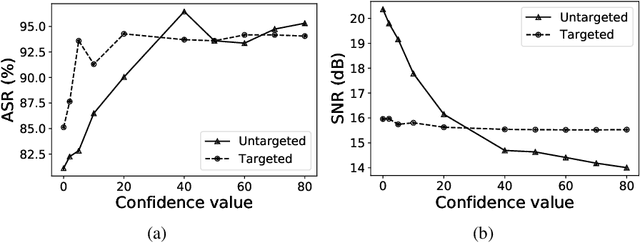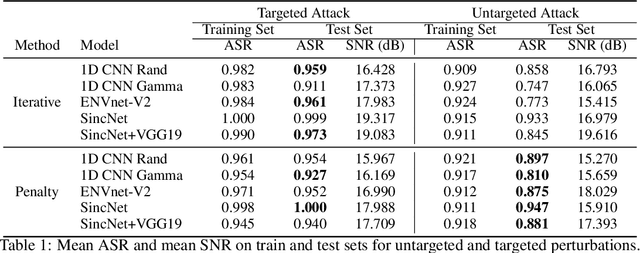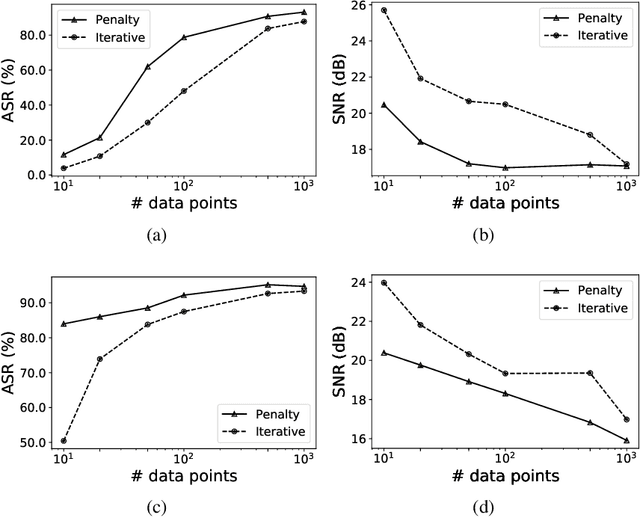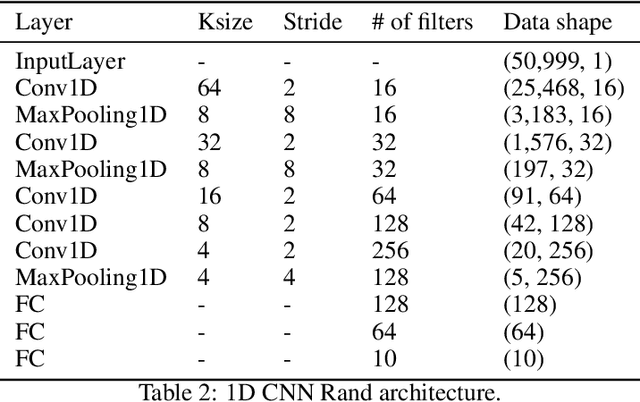Jerome Rony
Universal Adversarial Audio Perturbations
Aug 12, 2019



Abstract:We demonstrate the existence of universal adversarial perturbations, which can fool a family of audio processing architectures, for both targeted and untargeted attacks. To the best of our knowledge, this is the first study on generating universal adversarial perturbations for audio processing systems. We propose two methods for finding such perturbations. The first method is based on an iterative, greedy approach that is well-known in computer vision: it aggregates small perturbations to the input so as to push it to the decision boundary. The second method, which is the main technical contribution of this work, is a novel penalty formulation, which finds targeted and untargeted universal adversarial perturbations. Differently from the greedy approach, the penalty method minimizes an appropriate objective function on a batch of samples. Therefore, it produces more successful attacks when the number of training samples is limited. Moreover, we provide a proof that the proposed penalty method theoretically converges to a solution that corresponds to universal adversarial perturbations. We report comprehensive experiments, showing attack success rates higher than 91.1% and 74.7% for targeted and untargeted attacks, respectively.
Multi-region segmentation of bladder cancer structures in MRI with progressive dilated convolutional networks
Aug 09, 2018



Abstract:Precise segmentation of bladder walls and tumor regions is an essential step towards non-invasive identification of tumor stage and grade, which is critical for treatment decision and prognosis of patients with bladder cancer (BC). However, the automatic delineation of bladder walls and tumor in magnetic resonance images (MRI) is a challenging task, due to important bladder shape variations, strong intensity inhomogeneity in urine and very high variability across population, particularly on tumors appearance. To tackle these issues, we propose to use a deep fully convolutional neural network. The proposed network includes dilated convolutions to increase the receptive field without incurring extra cost nor degrading its performance. Furthermore, we introduce progressive dilations in each convolutional block, thereby enabling extensive receptive fields without the need for large dilation rates. The proposed network is evaluated on 3.0T T2-weighted MRI scans from 60 pathologically confirmed patients with BC. Experiments shows the proposed model to achieve high accuracy, with a mean Dice similarity coefficient of 0.98, 0.84 and 0.69 for inner wall, outer wall and tumor region, respectively. These results represent a very good agreement with reference contours and an increase in performance compared to existing methods. In addition, inference times are less than a second for a whole 3D volume, which is between 2-3 orders of magnitude faster than related state-of-the-art methods for this application. We showed that a CNN can yield precise segmentation of bladder walls and tumors in bladder cancer patients on MRI. The whole segmentation process is fully-automatic and yields results in very good agreement with the reference standard, demonstrating the viability of deep learning models for the automatic multi-region segmentation of bladder cancer MRI images.
 Add to Chrome
Add to Chrome Add to Firefox
Add to Firefox Add to Edge
Add to Edge